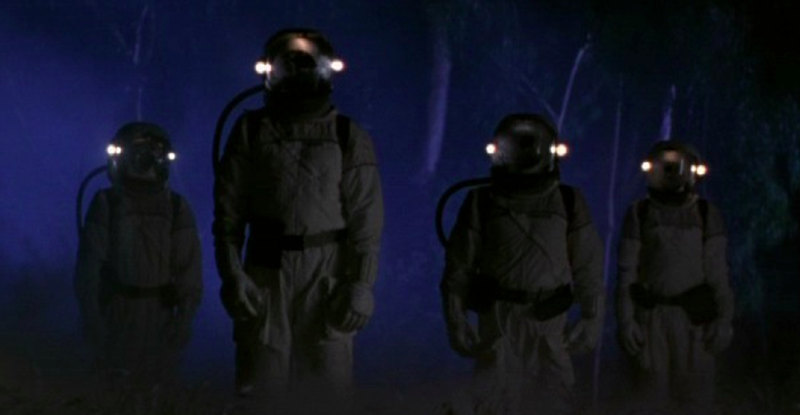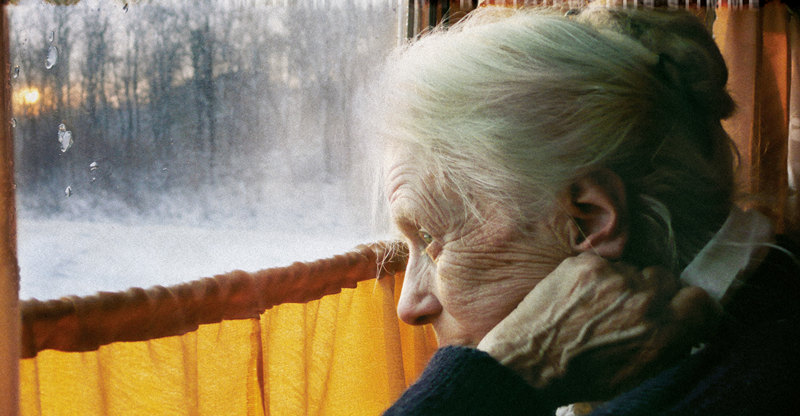“The Carol Burnett Show” is a tough one for me to review, because it’s a variety show, and that brand of television is nearly extinct. Only “Saturday Night Live” carries forth, and with more comedy than variety. It’s like trying to assess a pterodactyl, even though this particular old bird won 25 Emmys, eight Golden Globes, and three People’s Choice Awards.
TV now is dominated by reality shows, snarky talk and news shows that poke fun of . . . well, everything and everyone.
But during TV’s golden age the variety show was touched by Midas. “The Ed Sullivan Show,” which ran from 1948 to 1971, preserved the vaudeville format almost exactly, televising animal acts, circus acts, magicians, mind readers, musical acts, dancers, and comedians. But it was Sid Caesar in “Your Show of Shows” (1950-54) and “Caesar’s Hour” (1954-57) who pioneered sketch comedy as the meat-and-potatoes of variety shows, and that’s the direction that Carol Burnett took.
When variety shows were king, host royalty included Jackie Gleason, Lawrence Welk, Arthur Godfrey, Red Skelton, Dinah Shore, Milton Berle and Martha Raye, Perry Como, Eddie Fisher, George Gobel, Tennessee Ernie Ford, Patti Page, Judy Garland, Danny Kaye, Dean Martin, Jimmy Dean, Steve Lawrence, Andy Williams, Jerry Lewis, Jimmy Durante and the Lennon Sisters, Jim Nabors, Leslie Uggams, Glen Campbell, Tim Conway, Flip Wilson, Garry Moore and, of course, Burnett.
“The Carol Burnett Show” ran for 11 seasons, tying her with Milton Berle for eighth all-time among variety shows, behind Sullivan, Skelton, Welk, Benny, Gleason, Como, and Shore. But to watch her show now just isn’t the same as watching it then. So many of the sketches were parodies of TV shows, movies, and commercials, and topical humor can lose its edge. But some of the sketches still work amazingly well, like their Old Old Movie take-offs. This collection includes their spoof of Hitchcock’s “Rebecca,” and “Rebecky” is as clever and funny as anything you see on SNL. Others, like an episode from Non-Violent Theatre: “The Plot to Hurt Hitler,” pokes fun of the TV and movie censorship code and are more subtly funny. Some sketches seem to have a dumb premise (like Tim Coway as the “World’s Oldest Orphan”) but work anyway because of the writing and the acting. And of course there are also stinkers, like “Boring Speech” (which lives up to its name) and “The New Angel,” which you knew would plummet once you saw the cloud-based (and we’re talking e-storage) set decoration. Overall though, this collection is entertaining, and a nice reminder of what TV audiences used to enjoy.
“Interactive” is a big buzz word now, but Burnett interacted with her audience from the time her show debuted in fall 1967. Instead of doing a monologue, Burnett strode out onto the stage in a glamorous gown and took questions from the audience for a full three to four minutes. Sometimes she was quick to crack jokes, while other times the questions prompted more serious responses. In one segment, when a teenage boy asks if he can kiss her she invites him onstage, plops him down onto a stool, sings to him, and gives him not one kiss but three. Can you see a studio allowing a live audience to interact with stars today? Stars would be a nervous wreck, and network honchos would be that times 10. So it’s a fascinating part of every show, and half of Burnett’s weekly traditions.
Bob Hope had his “Thanks for the Memories” theme, and Burnett closed every show by singing the words to her own theme song:
I’m so glad we had this time together
Just to have a laugh or sing a song
Seems we just get started and before you know it
Comes the time we have to say, So long.
In between there was song and dance and guest stars performing—even a halftime commercial—but mostly there were comedy sketches, starring, at first, Burnett, Korman, Vicki Lawrence and Lyle Wagoner, and later Conway, after Wagoner left the show to do “Wonder Woman.” Guest stars got in the act too. If they weren’t singing, they were “sketching.”
As anyone who’s watched “SNL” knows, sketch comedy is hit or miss, and these shows illustrate how uneven the comedy could be. But there are moments, as when Helen Reddy sings “I Am Woman,” which became an anthem of the feminist movement, when you realize what a cultural signifier this show was as well. Quite a few of the shows also promote clean air and the environment, so there’s advocacy at work here as well.
“Carol’s Crack Ups” comes with a full-color eight-page booklet with printing on inside front and back covers as well, plus photos and full details for each show, both a list of songs and skits and a detailed description.
Included on six single-sided discs are:
- Show # 605 (September 27, 1972 —Andy Griffith, Helen Reddy)
- Show #1107 (October 22, 1977—Family Show: Dick Van Dyke)
- Show #615 (January 6, 1973—Tim Conway, Jack Cassidy)
- Show #603 (November 29, 1974—Carl Reiner, Melba Moore)
- Show #705 (September 29, 1973—Gloria Swanson)
- Show #701 (September 22, 1973—Tim Conway, Charo)
- Show #712 (December 15, 1973—Ruth Buzzi, Richard Crenna)
- Show #711 (December 1, 1973—Family Show)
- Show #1103 (October 1, 1977—Steve Lawrence, Dick Van Dyke)
- Show #1105 (October 8, 1977—Family Show, Dick Van Dyke)
- Show #619 (February 10, 1973—John Byner, Petula Clark)
- Show #723 (March 23, 1974—John Byner, Francine Beers)
- Show #1011 (December 4, 1976—Alan King)
- Show #702 (October 6, 1973—Helen Reddy, John Byner)
- Show #918 (January 24, 1976—Emmett Kelly, The Jackson 5)
- Show #804 (September 28, 1974—James Coco, Pointer Sisters)
Video:
A number of the episodes have been cleaned up, and they’re not nearly as grainy or washed out as I would have expected. Colors are actually bright, and for an old TV show from the ‘70s there’s more edge delineation than I would have thought. Time-Life/StarVista did a nice job with these, as I’m guessing the source materials weren’t in the greatest shape.
Audio:
The audio appears to be a Dolby Digital 2.0 Mono, and like the video it’s a very respectable presentation. Nothing positive or negative to say. Just a serviceable soundtrack.
Extras:
Included on Disc 1 are two featurettes, “Almost Live” and “Breaking Up Is Hard . . . Not to Do,” which fans ought to appreciate. There’s also a bonus sketch of “As the Stomach Turns,” one of two recurring soap opera spoofs, this one a 1973 bit starring Conway and Valerie Harper.
Disc 2 offers a featuette on Conway and an interview as well, along with three bonus sketches, including the classic “Open Wider Please” with George Carlin. Also here is “Two-Man Sub” (with Conway and Korman) and “The Interrogator,” with Conway, Korman, and Waggoner.
Disc 3 bonus features zero in on Korman and Conway with a “We Love You, Harvey” featurette and one on “Tim on the Street.” Bonus sketches are “The Oldest Man: Fireman” (Tim and Harvey) and “Group Therapy” (Carol, Vicki, Tim, James Garner, and Ken Berry).
Disc 8 features “Harvey Korman & Tim Conway: Together Again, Part 2,” a featurette on “Laugh Tracks,” and interviews with Reiner, Lawrence, and Conway.
Bottom line:
There’s a reason why variety shows aren’t airing today, and I suspect it has to do with point of connection. The sketches simply aren’t as funny as some of the best SNL sketches. The old-fashioned mix of song-and-dance routines and comic sketches even seems quaint by today’s standards, like your grandmother’s brooch. But there’s still value here. “The Carol Burnett Show” was one of the very best variety shows, and as you watch you’ll see how the groundwork was laid for many shows and routines to follow. And consummate performers are still consummate performers. The more shows you watch, the more you begin to feel close to them, and then it’s like going to see a friend perform. The bonus features help that attitude considerably. Fans should be pleased with this collection, but check your package right away after you buy it, or open it in the store to play it safe. The screener I was sent was missing discs 7 and 8.


